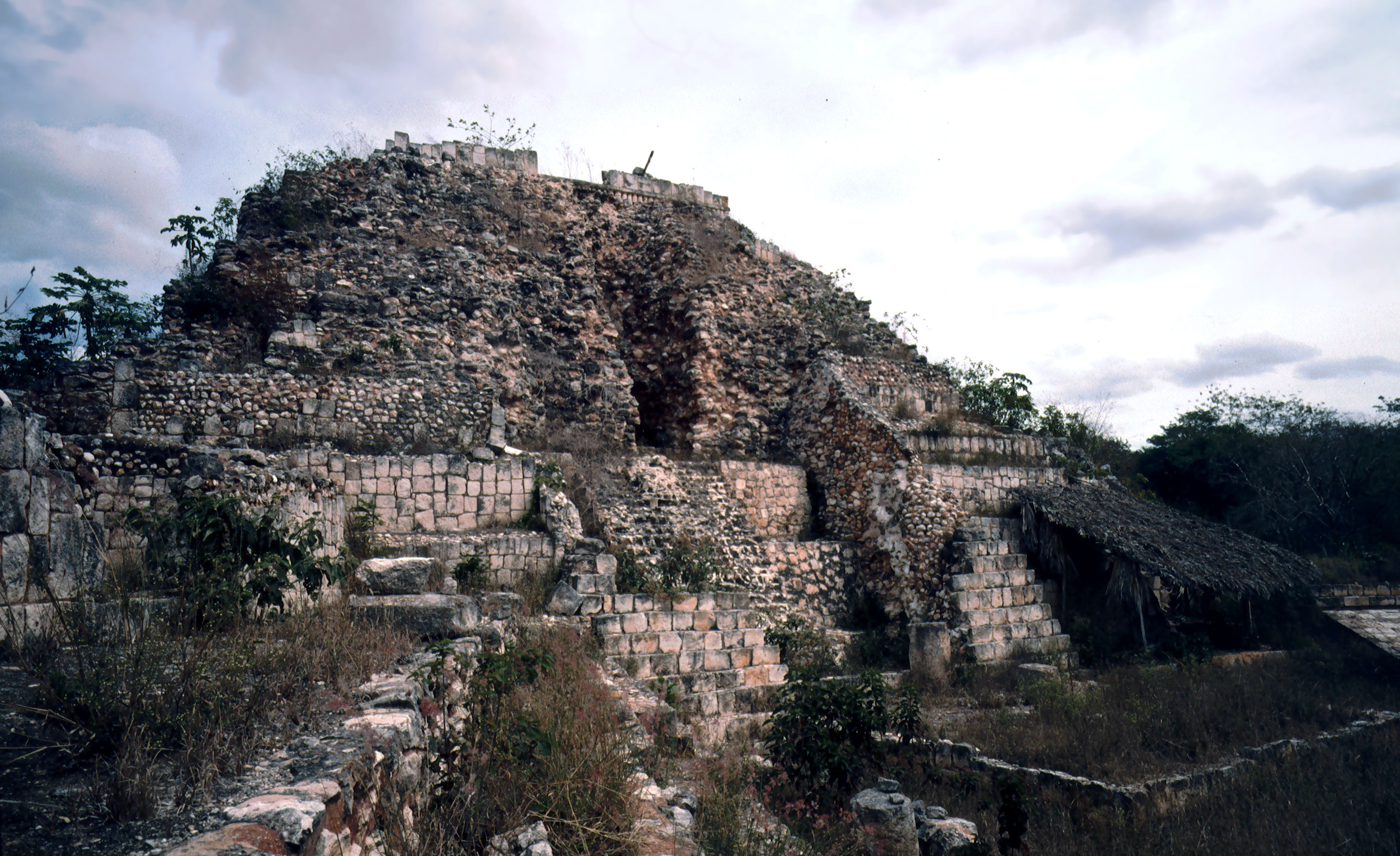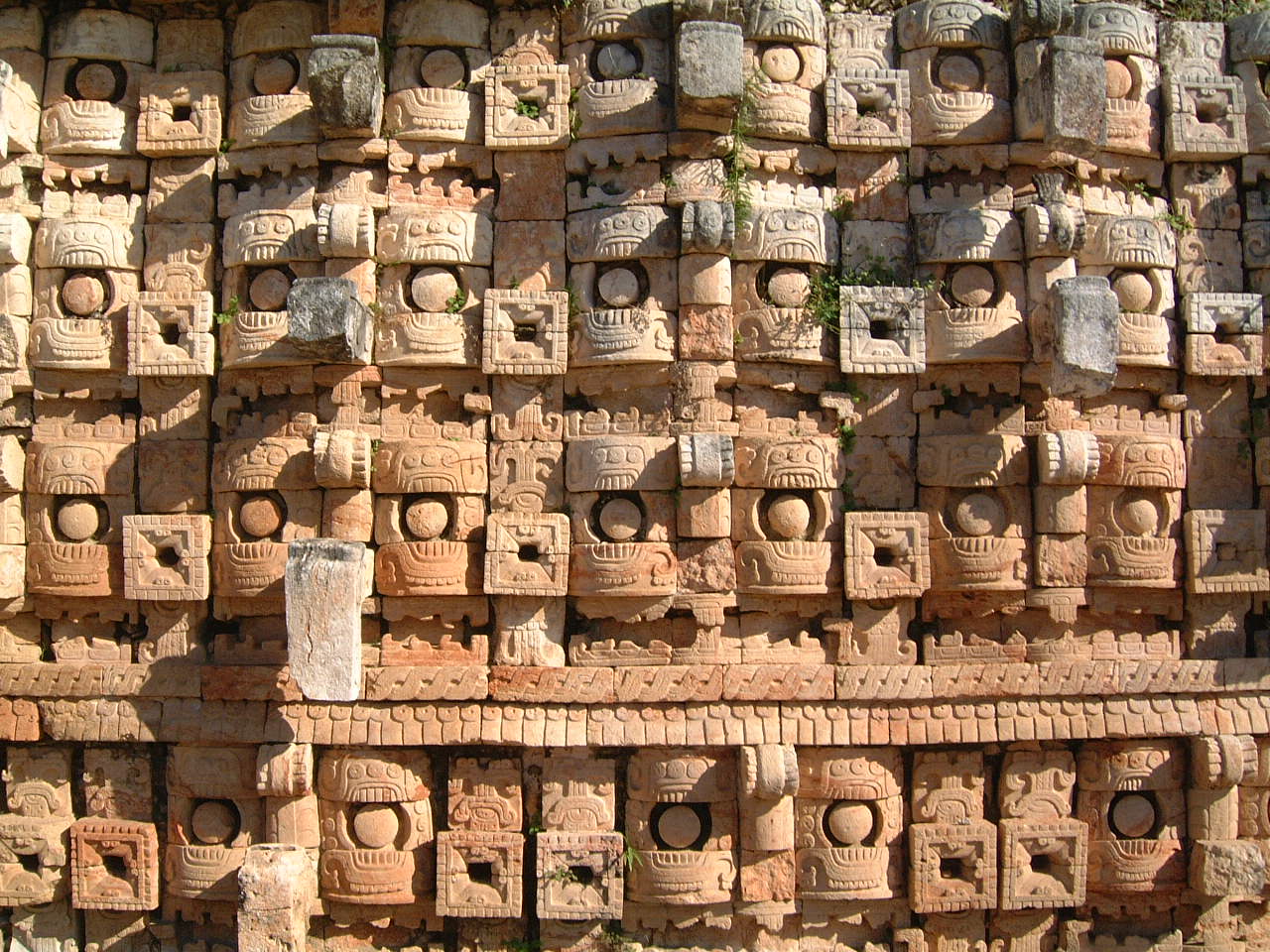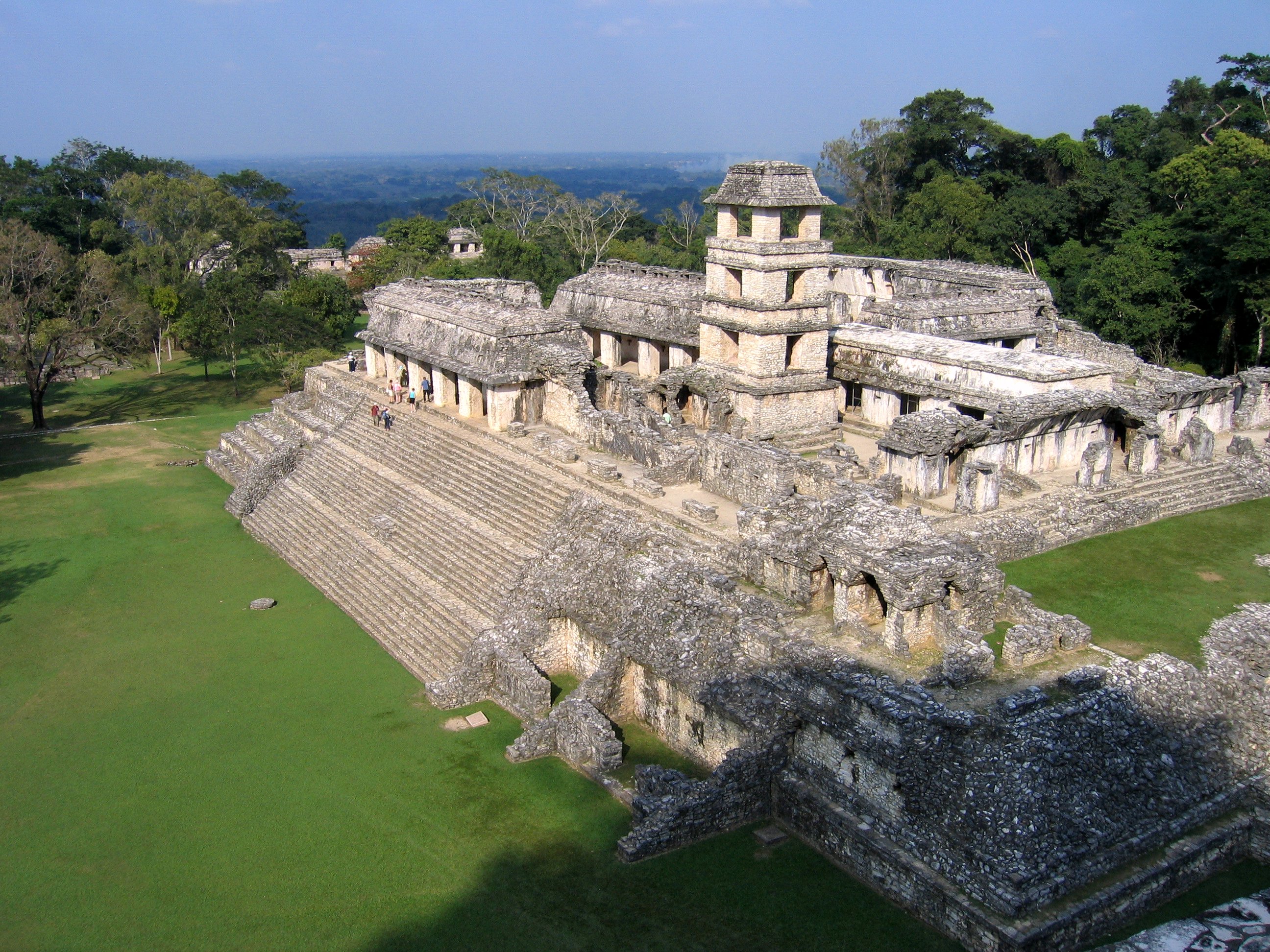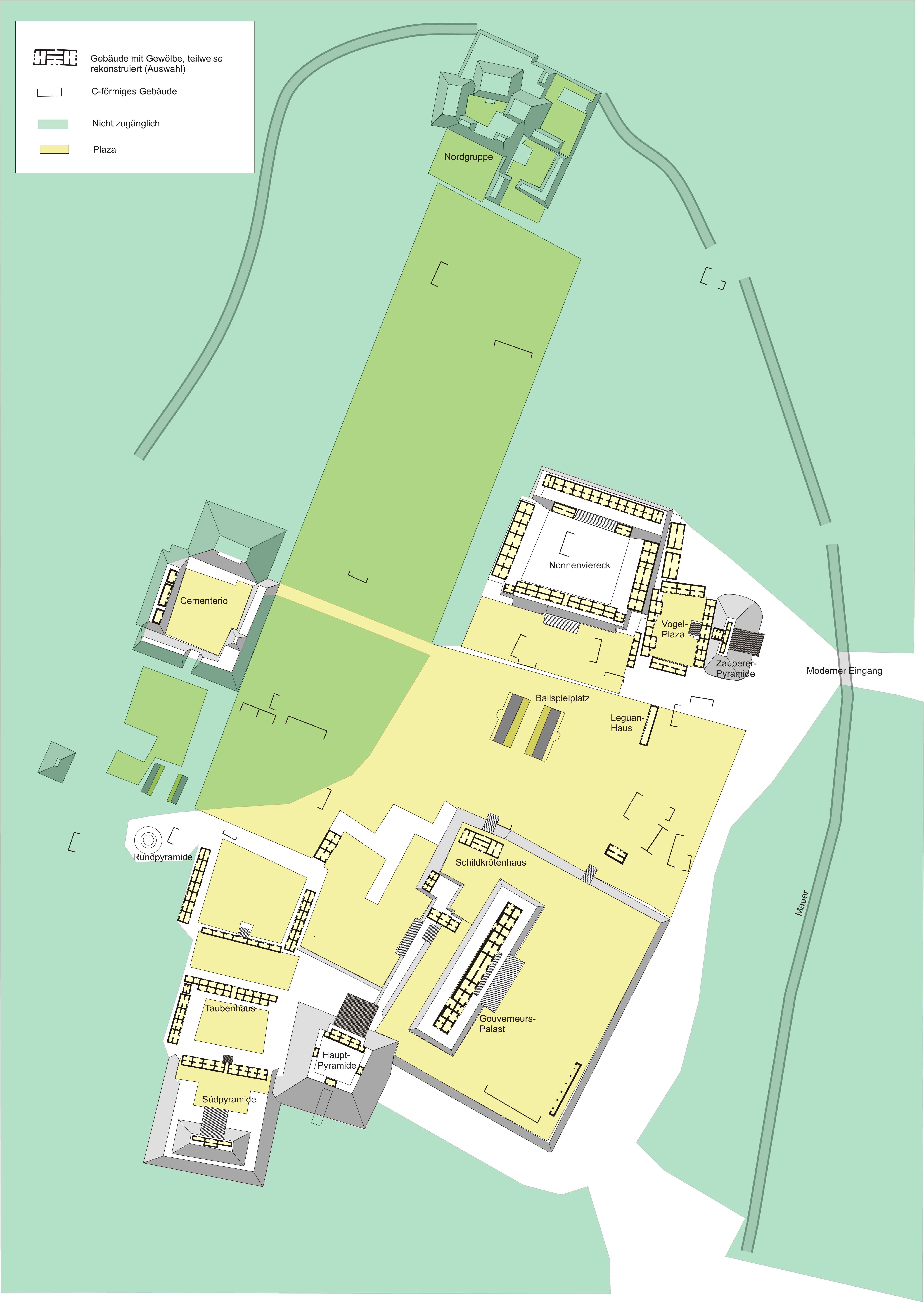|
Puuc
Puuc is the name of a region in the Mexican state of Yucatán (state), Yucatán and a Maya architecture, Maya architectural style prevalent in that region. The word ''puuc'' is derived from the Maya term for "hill". Since the Yucatán is relatively flat, this term was extended to encompass the large karstic range of hills in the southern portion of the state, hence the terms Puuc region or Puuc hills. The Puuc hills extend into northern Campeche and western Quintana Roo. The term Puuc is also used to designate the Mesoamerican architecture, architectural style of ancient Maya sites located within the Puuc hills, hence the term Puuc architecture. This architectural style began at the end of the Mesoamerican chronology#Late Classic, Late Classic period but experienced its greatest extent during the Mesoamerican chronology#Terminal Classic, Terminal Classic period. Puuc architecture In the florescence of Puuc architecture (such as at the ancient Maya civilization, Maya site o ... [...More Info...] [...Related Items...] OR: [Wikipedia] [Google] [Baidu] |
Sayil
Sayil was a pre-Columbian city built by the Maya people of the Terminal Classic period. It is located in the Mexican state of Yucatán, in the southwest of the state, south of Uxmal. Sayil, Kabah and Labna were incorporated together with Uxmal as a UNESCO World Heritage Site in 1996. Sayil flourished principally, albeit briefly, in the Terminal Classic period. The city reached its greatest extent c. 900 and had a population of 10,000 with an additional 5,000–7,000 living in the surrounding area. A number of badly damaged monuments suggest that Sayil was governed by a local royal dynasty,Sharer & Traxler 2006, p.545. with wealth among lineages based, at least in part, upon control of the best agricultural lands.Carmean ''et al.'' 2005, p.435 The ruins of Sayil include a prominent example of monumental Puuc style architecture, the partially ruined Grand Palace of Sayil. Location The site is located in the karst limestone hills of the Puuc region of the northern Yuca ... [...More Info...] [...Related Items...] OR: [Wikipedia] [Google] [Baidu] |
Sayil2
Sayil was a pre-Columbian Maya city, city built by the Maya people of the Mesoamerican chronology, Terminal Classic period. It is located in the Mexican state of Yucatán (state), Yucatán, in the southwest of the state, south of Uxmal. Sayil, Kabah (Maya site), Kabah and Labna were incorporated together with Uxmal as a UNESCO World Heritage Site in 1996. Sayil flourished principally, albeit briefly, in the Terminal Classic period. The city reached its greatest extent c. 900 and had a population of 10,000 with an additional 5,000–7,000 living in the surrounding area. A number of badly damaged monuments suggest that Sayil was governed by a local royal dynasty,Sharer & Traxler 2006, p.545. with wealth among lineages based, at least in part, upon control of the best agricultural lands.Carmean ''et al.'' 2005, p.435 The ruins of Sayil include a prominent example of monumental Puuc style architecture, the partially ruined Grand Palace of Sayil. Location The site is located in t ... [...More Info...] [...Related Items...] OR: [Wikipedia] [Google] [Baidu] |
Maya Civilization
The Maya civilization () was a Mesoamerican civilization that existed from antiquity to the early modern period. It is known by its ancient temples and glyphs (script). The Maya script is the most sophisticated and highly developed writing system in the pre-Columbian Americas. The civilization is also noted for its art, architecture, mathematics, calendar, and astronomical system. The Maya civilization developed in the Maya Region, an area that today comprises southeastern Mexico, all of Guatemala and Belize, and the western portions of Honduras and El Salvador. It includes the northern lowlands of the Yucatán Peninsula and the Guatemalan Highlands of the Sierra Madre, the Mexican state of Chiapas, southern Guatemala, El Salvador, and the southern lowlands of the Pacific littoral plain. Today, their descendants, known collectively as the Maya, number well over 6 million individuals, speak more than twenty-eight surviving Mayan languages, and reside in nearly the s ... [...More Info...] [...Related Items...] OR: [Wikipedia] [Google] [Baidu] |
Xlapak
Xlapak (or Xlapac) is a small Maya archaeological site in the Yucatan Peninsula of southeastern Mexico. It is located in the heart of the Puuc region, about from the archaeological site of Labná and a similar distance from Sayil, lying directly between the two sites. It consists of three main groups in a valley of the Puuc Hills in Yucatán State,Toscano Hernández & Huchim Herrera 2004, p.84. a region of karst limestone forming the only major topographical feature of the peninsula. The closest town is Oxkutzcab, about to the northeast. The site dates from the Late to Terminal Classic periods and was sited in an area suitable for agriculture. Restoration at Xlapak, and other nearby archaeological sites, was carried out in the first half of the 20th century by the Mexican '' Instituto de Antropologia e Historia'' (Institute of Anthropology and History). Further archaeological investigation was carried out in 1965 under the direction of César A. Sáenz. The site The site ... [...More Info...] [...Related Items...] OR: [Wikipedia] [Google] [Baidu] |
Kabah, Yucatán
Kabah (also spelled Kabaah, Kabáh, Kahbah and Kaba) is a Maya archaeological site in the Puuc region of western Yucatan, south of Mérida. It was incorporated together with Uxmal, Sayil and Labna as a UNESCO World Heritage Site in 1996. Kabah is south of Uxmal, connected to that site by an long raised causeway wide with monumental arches at each end. Kabah is the second largest ruin of the Puuc region after Uxmal. The site is on Fed. 261, approximately south from Mérida, Yucatán, towards Campeche, Campeche, and is a popular tourism destination. Ruins extend for a considerable distance on both sides of the highway; many of the more distant structures are little visited, and some are still overgrown with forest. , a program was ongoing to clear and restore more buildings, as well as archeological excavations under the direction of archeologist Ramón Carrasco. Kabah was declared a Yucatán state park in 1993. History The name ''Kabah'' or ''Kabaah'' was first ... [...More Info...] [...Related Items...] OR: [Wikipedia] [Google] [Baidu] |
Mesoamerican Architecture
Mesoamerican architecture is the set of architectural traditions produced by pre-Columbian cultures and civilizations of Mesoamerica, traditions which are best known in the form of public, ceremonial and urban monumental buildings and structures. The distinctive features of Mesoamerican architecture encompass a number of different regional and historical styles, which however are significantly interrelated. These styles developed throughout the different phases of Mesoamerican history as a result of the intensive cultural exchange between the different cultures of the Mesoamerican culture area through thousands of years. Mesoamerican architecture is mostly noted for its pyramids, which are the largest such structures outside of Ancient Egypt. One interesting and widely researched topic is the relation between cosmovision, religion, geography, and architecture in Mesoamerica. Much seems to suggest that many traits of Mesoamerican architecture were governed by religious and mythol ... [...More Info...] [...Related Items...] OR: [Wikipedia] [Google] [Baidu] |
Maya Architecture
The Mayan architecture of the Maya civilization spans across several thousands of years, several eras of political change, and architectural innovation before the Spanish colonization of the Americas. Often, the buildings most dramatic and easily recognizable as creations of the Maya peoples are the step pyramids of the Terminal Preclassic Maya period and beyond. Based in general Mesoamerican architecture, Mesoamerican architectural traditions, the Maya utilized geometric proportions and intricate carving to build everything from simple houses to ornate temples. This article focuses on the more well-known Mesoamerican chronology, pre-classic and Mesoamerican chronology, classic examples of Maya architecture. The temples like the ones at Palenque, Tikal, and Uxmal represent a zenith of Maya art and architecture. Through the observation of numerous elements and stylistic distinctions, remnants of Maya architecture have become an important key to understanding their religious beliefs ... [...More Info...] [...Related Items...] OR: [Wikipedia] [Google] [Baidu] |
Labna
Labna (or Labná in Writing system of Spanish, Spanish orthography) is a Mesoamerican archaeological site and ceremonial center of the pre-Columbian Maya civilization, located in the Puuc Hills region of the Yucatán Peninsula. It is situated to the south of the large Maya site of Uxmal, in the southwest of the present-day state of Yucatán (state), Yucatán, Mexico. Labna, Sayil and Kabah (Maya site), Kabah were incorporated with Uxmal as a UNESCO World Heritage Site in 1996. History The city existed from 200 to 1000 AD. It reached its peak in the period from 800 to 1000 AD. It undoubtedly had a complex social organization and shares style and decorative elements with other cities in the region (Uxmal, Sayil, Kabah). It is estimated that about 3,000 inhabitants lived in Labna. The first written report of Labna was by John Lloyd Stephens who visited it with artist Frederick Catherwood in 1842. Thanks to this, drawings illustrating the state of the ruins from that period have a ... [...More Info...] [...Related Items...] OR: [Wikipedia] [Google] [Baidu] |
Uxmal
Uxmal (Yucatec Maya: ''Óoxmáal'' ) is an ancient Maya civilization, Maya city of the classical period located in present-day Mexico. It is considered one of the most important archaeological sites of Maya culture, along with Palenque, Chichen Itza and Calakmul in Mexico, Caracol and Xunantunich in Belize, and Tikal in Guatemala. It is located in the Puuc, Puuc region of the western Yucatán Peninsula, and is considered one of the Maya cities most representative of the region's dominant architectural style. It was designated a UNESCO World Heritage Site along with the nearby ruins of Kabah (Maya site), Kabah, Sayil and Labna. Uxmal is located 62 km south of Mérida, Yucatán, Mérida, capital of Yucatán state in Mexico. Its buildings are noted for their size and decoration. Ancient roads called ''sacbes'' connect the buildings, and also were built to other cities in the area such as Chichén Itzá in modern-day Mexico, Caracol and Xunantunich in modern-day Belize, and Tika ... [...More Info...] [...Related Items...] OR: [Wikipedia] [Google] [Baidu] |
Xculoc
Xculoc is a village in Campeche, Mexico. This settlement of Maya people is located 20 kilometres south of Uxmal and the same distance west of Sayil.Kramer, K., ''Maya Children: Helpers at the Farm'' (Harvard University Press, 2005), p. 55. Ancient Puuc Puuc is the name of a region in the Mexican state of Yucatán (state), Yucatán and a Maya architecture, Maya architectural style prevalent in that region. The word ''puuc'' is derived from the Maya term for "hill". Since the Yucatán is rel ... style Mayan building ruins are located in Xculoc. References {{coord, 20, 11, N, 89, 50, W, display=title, region:MX_type:city_source:GNS-enwiki Populated places in Campeche Maya sites in Campeche Maya Classic Period ... [...More Info...] [...Related Items...] OR: [Wikipedia] [Google] [Baidu] |
Campeche
Campeche, officially the Free and Sovereign State of Campeche, is one of the 31 states which, with Mexico City, make up the Administrative divisions of Mexico, 32 federal entities of Mexico. Located in southeast Mexico, it is bordered by the states of Tabasco to the southwest, Yucatán (state), Yucatán to the northeast, Quintana Roo to the east, by the Petén (department), Petén department of Guatemala to the south, and by the Orange Walk District of Belize to the southeast. It has a coastline to the west with the Gulf of Mexico. The state capital, also called Campeche City, Campeche, was declared a World Heritage Site in 1997. The formation of the state began with the city, which was founded in 1540 as the Spanish began the conquest of the Yucatán Peninsula. The city was a rich and important port during the colonial period, but declined after Mexican War of Independence, Mexico's independence. Campeche was part of the province of Yucatán, but split off in the mid-19th century ... [...More Info...] [...Related Items...] OR: [Wikipedia] [Google] [Baidu] |
Yucatán (state)
Yucatán, officially the Free and Sovereign State of Yucatán, is one of the 31 states which, along with Mexico City, constitute the 32 Political divisions of Mexico, federal entities of Mexico. It comprises 106 separate Municipalities of Yucatán, municipalities, and its capital city is Mérida, Yucatán, Mérida. Located on the northern part of the Yucatán Peninsula, it is bordered by the states of Campeche to the southwest and Quintana Roo to the southeast, with the Gulf of Mexico off its northern coast. Before the arrival of Conquistador, Spaniards, the peninsula was a very important region for the Maya civilization that reached the peak of its development here, where the Maya founded the cities of Chichen Itza, Izamal, Motul, Yucatán, Motul, Mayapan, Ek' Balam, and Ichkanzihóo (also called T'ho), now Mérida. After the Spanish conquest of Yucatán (early 16th to late 17th centuries), the Yucatán Peninsula became a single administrative and political entity, the Capt ... [...More Info...] [...Related Items...] OR: [Wikipedia] [Google] [Baidu] |





